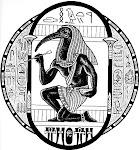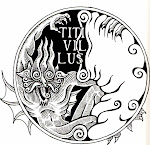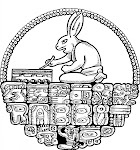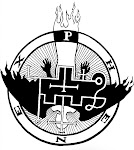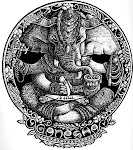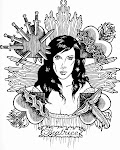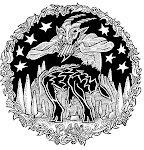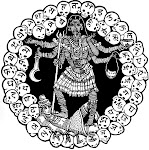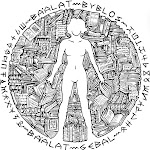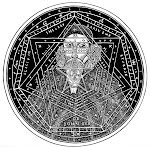 I saw the best minds of my generation destroyed by
I saw the best minds of my generation destroyed bymadness, starving hysterical naked,
dragging themselves through the negro streets at dawn
looking for an angry fix,
angelheaded hipsters burning for the ancient heavenly
connection to the starry dynamo in the machinery of night ...
— Allen Ginsberg, “Howl”
How is it that writers always seem to locate the height of inspiration in the depths of misery? And aside from the infinite scribblings of teenage angst (those covert rhyming pages, the prolific and aching pop-song apprenticeship of every author), how is it that the truly inspired writers manage to convey the depths of misery in such alluring terms? Who wouldn’t want to be counted among the best minds immortalized in Ginsberg's “Howl”? So what if you had to qualify through an epic act of self-destruction? Sign me up as an angelheaded hipster; I’m ready for hysterical, naked, but surely noble dragging, burning, and angry fixing. And who doesn’t want to express “the wakeful anguish of the soul” the way Keats did, or taste the fruit he crushes in the last stanza of the “Ode on Melancholy”?
Ay, in the very temple of Delight
Veil’d Melancholy has her sovran shrine,
Though seen of none save him whose strenuous tongue
Can burst Joy’s grape against his palate fine;
His soul shall taste the sadness of her might,
And be among her cloudy trophies hung.
Keats understands that Delight and Melancholy are roommates and, like Ginsberg, he suggests they only hang out with an in-crowd of inspired sufferers. In The Anatomy of Melancholy (1621), Robert Burton described melancholy as a disposition that “goes and comes upon every small occasion of sorrow, need, sickness, trouble, fear, grief, passion, or perturbation of the mind, any manner of care, discontent, or thought, which causes anguish, dullness, heaviness and vexation of spirit, any ways opposite to pleasure, mirth, joy, delight, causing forwardness in us, or a dislike.” Admit it, writer: just reading that gloomy list gets the creative black bile flowing, doesn’t it? The Beat Generation of Ginsberg, the Romantic generation of Keats, they all had melancholy in common, a pose of aestheticized alienation that has fuelled literary fires since the craft of writing was first delivered to earth by the inscrutable inhabitants of the Writer’s Pantheon.
In “The Poets”, the great Canadian poet Archibald Lampman described his fellow writers as:
Half brutish, half divine, but all of earth,
Half-way ʼtwixt hell and heaven, near to man,
The whole world’s tangle gathered in one span,
Full of this human torture and this mirth ...
Which brings us to Phenex, a figure who, as a fallen-angel-poet presiding in Hell, definitely burns for the ancient heavenly connection, half brutish, half divine. Sometimes identified as Phoenix, this being is associated with the legendary bird of the same name, understood to be reborn again and again out of an inferno of its own making, the ultimate expression of creative agony. Historical sources attest to the fallen angel’s literary skill, as well as his willingness to do the bidding of those able to summon him. Here’s how Johann Weyer described Phenex (Phoenix) in his “Pseudomonarchia daemonum” (1583, translated and published in English by Reginald Scot in 1584):
Phoenix is a great marquesse, appearing like the bird Phoenix, having a child’s voice: but before he standeth still before the conjuror, he singeth manie sweet notes. Then the exorcist with his companions must beware he give no eare to the melodie, but must by and by bid him put on humane shape; then will he speake marvellouslie of all wonderfull sciences. He is an excellent poet, and obedient, he hopeth to returne to the seventh throne after a thousand two hundreth yeares, and governeth twentie legions.
The description was plagiarized in the 17th-century text, The Lesser Key of Solomon, issued in English by Samuel Mathers and Aleister Crowley in 1904 (though the description is derivative, The Lesser Key of Solomon depicts the angelic Seal or sigil of Phenex, which I’ve appropriated in turn for the illustration):
The Thirty-Seventh Spirit is Phenex (or Pheynix). He is a great Marquis, and appeareth like the Bird Phoenix, having the Voice of a Child. He singeth many sweet notes before the Exorcist, which he must not regard, but by-and-by he must bid him put on Human Shape. Then he will speak marvellously of all wonderful Sciences if required. He is a Poet, good and excellent. And he will be willing to perform thy requests. He hath hopes also to return to the Seventh Throne after 1,200 years more, as he said unto Solomon. He governeth 20 Legions of Spirits. And his Seal is this, which wear thou, etc.
If you’re a writer looking for an angry fix, or if you’re eager to pen the contemporary equivalent of Arthur Rimbaud’s Une saison en enfer (1873), you’ll be keen on the recurring indications that Phenex is “obedient” and “willing to perform thy requests”. At the very least, you’re sure to have an eloquent companion in your misery. In fact, some occult texts describe the Phoenix as a protector of humanity, spreading its wings before the sun, ensuring mortals below are not consumed by the heat. Keep in mind, however, the warnings against the creature’s beguiling voice (I suddenly hear “Sympathy for the Devil”, Mick Jagger singing “I laid traps for troubadours ...”) and the need for the demon to maintain at least a semblance of humanity to ensure you make it out of the transaction alive—all an indication, perhaps, that in the process of burning for the ancient heavenly connection in the company of this particular character, you’re more than likely going to get burned.
Writers with a more developed sense of self-preservation who are determined to enlist a literary patron-angel may want to consider the less diabolic—but, thanks to Edgar Allen Poe, no less melancholy—Israfel or, even better, the wholly consecrated literary powers of angels such as Vretil, Pravuil, Uriel, or Gabriel. Still, if you’re shorn of loved ones, if you’ve made a mess of familiar routines, if you’ve embraced melancholy, abandoned hope, or finally yielded to inner demons, then Phenex may help you compose that broken-hearted, inebriated, resigned, and tormented masterpiece you’ve been stoking in the midst of your creative misery, syllable by searing syllable.
I know the feeling. I was in the company of Phenex when I started writing this essay, but now that I’m finished, I’m pretty happy with the words I’ve strung together. How the hell could I possibly keep writing?
Sources
“The Anatomy of Melancholy by Robert Burton” Project Gutenberg
http://www.gutenberg.org/files/10800/10800-h/ampart1.html
A Dictionary of Angels, Including the Fallen Angels. Gustav Davidson. New York: The Free Press, 1967.
“Howl” Allen Ginsberg (accessed 10 January 2009)
http://members.tripod.com/~Sprayberry/poems/howl.txt
“Melancholia” Wikipedia (accessed 10 January 2009)
http://en.wikipedia.org/wiki/Melancholy
“Ode on Melancholy” John Keats. Bartleby.com (accessed 10 January 2009)
http://www.bartleby.com/126/48.html
“Phenex” DeliriumsRealm (accessed 10 January 2009)
http://www.deliriumsrealm.com/delirium/articleview.asp?Post=314
“The Poets” Archibald Lampman. Canadian Poetry (accessed 10 January 2009)
http://www.canadianpoetry.ca/confederation/Archibald%20Lampman/among_the_millet/the_poets.htm
“Seal of Phenex” Liam’s Pictures From Old Books (accessed 10 January 2009)
http://www.fromoldbooks.org/Mathers-Goetia/pages/037-Seal-of-Phenex/
